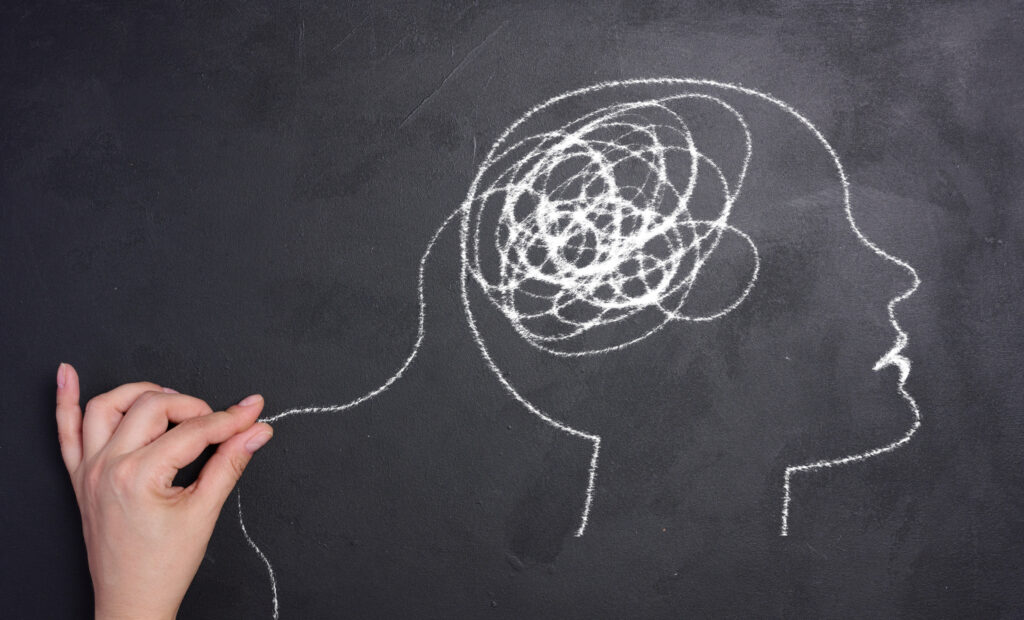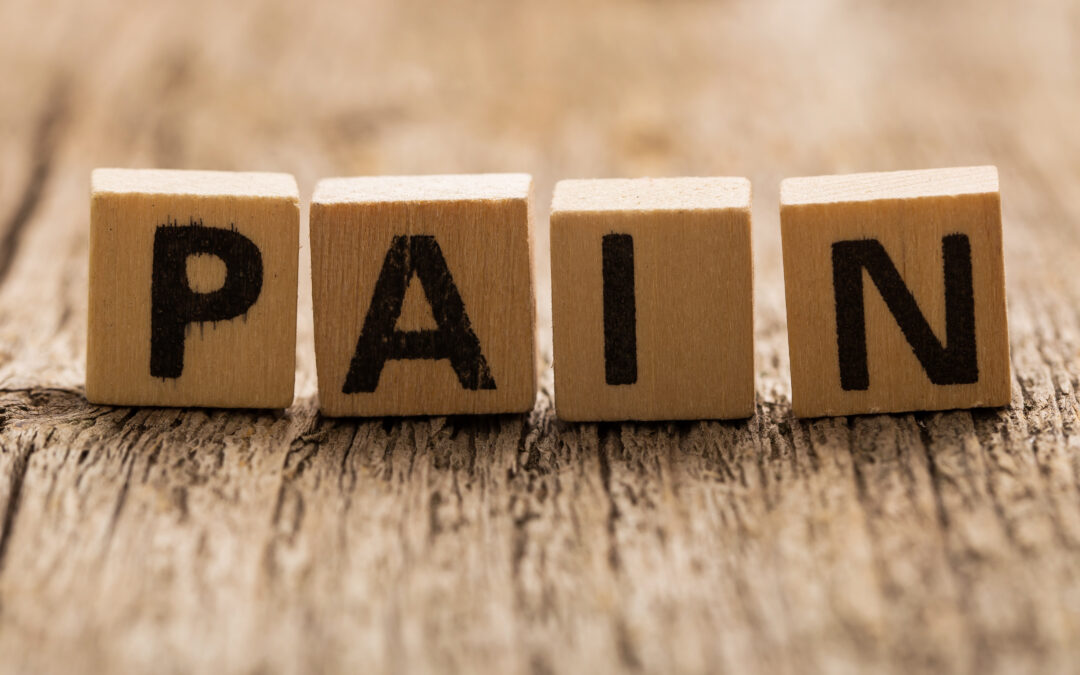What Is Chronic Pain?
Let’s start with the big question: what is chronic pain, and why doesn’t it go away?
Pain is usually thought of as something simple: touch a hot stove, feel pain, pull your hand away. But that’s only part of the story. The International Association for the Study of Pain defines pain as both an unpleasant physical and emotional experience linked to tissue damage or even the potential for damage.
Read that again. Pain isn’t just about the body. It’s also about the mind. And those two are completely connected. When we ignore the emotional side, we miss half the picture. The truth is, understanding the mind-body link is one of the most powerful steps you can take toward healing.
Acute vs Chronic Pain
To make sense of what happens, let’s look at acute vs chronic pain.
Acute pain is what happens when you stub your toe or twist your ankle. That sudden, sharp pain is your body’s way of saying, “Stop. Something’s wrong. Protect this area so it can heal.”
Your ankle swells. It hurts to walk. And inside that swelling, healing cells are hard at work repairing the damage. Over a few weeks, the tissues realign, inflammation decreases, and the body strengthens. The pain fades because the job is done.
Now here’s the twist: doctors generally say that if pain lasts more than three months, even after the tissue has healed, it’s called chronic pain. At this stage, your body should be fine. You should be walking normally again. But people with chronic pain still feel extreme discomfort, as if the injury never healed.

Why Doesn’t Chronic Pain Go Away?
This is the part that frustrates patients the most: why doesn’t chronic pain go away when the body is healed?
The truth is, science doesn’t have one single answer. But what we do know is fascinating.
Sometimes, when nerves regrow after an injury, they don’t reconnect properly. They send tiny signals that normally wouldn’t bother you. But because the brain has been living with pain for so long, it’s on high alert. It takes those tiny signals and amplifies them. Instead of calming down, the brain keeps shouting, “Pain! Pain! Pain!” even when the tissues are healthy.
This is what we call chronic pain brain rewiring. The nervous system literally learns pain, and once it’s learned, it doesn’t easily forget.
A classic example is phantom limb pain. People who lose a limb often still feel pain in the missing arm or leg. There’s nothing physically wrong; it’s the brain replaying the pain signals it has stored. That shows us pain doesn’t just live in the body. It lives in the brain’s interpretation of what it thinks is happening.
How Western Medicine Handles Chronic Pain
In Western medicine, the usual approach is to manage pain rather than cure it. Medications, injections, or even surgery can all provide temporary relief. They’re not useless; far from it. They can offer small wins and valuable breathing room.
But here’s the key: those windows of relief are your opportunity. They’re the moments where you can begin your own healing work. If you rely only on medicine, you’re missing out. True healing often comes from retraining your body and your brain together.

Healing Chronic Pain Naturally
So how do you move from management to healing? The answer is balance.
Movement and rehabilitation. Normal movement is essential. It tells the body, “We’re safe. We’re strong. We can move.” Working with a physiotherapist, kinesiologist, or occupational therapist can help reset healthy patterns, reduce stiffness, and restore confidence.
Mind-body practices. The mind body connection in chronic pain is real and powerful. Practices like qigong, yoga, pilates, or tai chi don’t just stretch your muscles; they calm your nervous system and help rewire your brain.
Mental and emotional tools. Think of your brain like faulty wiring. A tiny spark can set off a whole alarm system. That’s why sometimes a small trigger feels overwhelming. Techniques like mindfulness, breath work, somatic tracking, or even music help you speak the brain’s own language. Instead of “fight or flight,” your nervous system learns “rest and repair.”
When the brain starts to believe the body is safe, your immune system follows suit. Instead of constant inflammation, it shifts toward healing. That’s why calming the mind is just as important as strengthening the body.

A Closer Look at the Brain’s Role
Some patients are told, “It’s all in your head.” Usually, that phrase feels dismissive, like the pain isn’t real. But here’s the surprising truth: it actually is in the head, in the sense that pain is created in the brain. And that doesn’t make it any less real.
Your thinking brain (the logical, problem-solving part) can’t directly control your emotional brain. That’s why you can’t simply decide to stop hurting. But you can use tools that bypass the thinking brain and reach the midbrain, the place where sensory and emotional signals are processed.
When you practice mindfulness or breath work regularly, the brain begins to relearn. It doesn’t fire the pain signals so quickly. It calms. It resets. And little by little, the cycle of pain weakens.

Practical Steps You Can Try Today
If you’re wondering where to start, here are a few simple tools you can use right away:
- Breathe with awareness. Take five minutes a day to sit quietly and notice your breathing. Inhale slowly through your nose, exhale gently through your mouth. This simple act can calm the nervous system and reduce pain signals.
- Gentle daily movement. Even if it’s just a short walk or light stretching, consistent movement reminds your body and brain that you’re safe to move.
- Track your triggers. Keep a small journal where you note when pain flares up. Is it tied to stress, fatigue, certain activities? Awareness is the first step to changing the pattern.
- Add music or relaxation. Music isn’t just enjoyable; it changes brain chemistry. Play calming music while resting or stretching to reinforce a healing state.
- Reach for support. Working with a physiotherapist, counsellor, or wellness coach gives you guidance and accountability, making it easier to stay consistent.
Each small step helps retrain your brain and body. Healing is rarely about one big breakthrough; it’s about steady, consistent practice.
Breaking Free from Pain
The hidden truth about chronic pain is this: your body may be healed, but your brain hasn’t caught up yet. The pain is real, but so is the possibility of change.
Breaking free doesn’t happen overnight. It takes patience, practice, and persistence. But every mindful breath, every gentle stretch, every calm response is a signal to your brain: “We are safe. We are healing.”
Over time, those signals add up. The old story of constant pain gets replaced by a new story, one where you feel stronger, calmer, and in control.
Living with chronic pain can feel overwhelming, but you are not powerless. Once you understand how pain works, you can begin to take back control.
By combining Western medicine’s small wins with natural approaches that target both body and mind, you can start the journey toward real healing. Pain may be part of your story right now, but it doesn’t have to be the ending. Relief, freedom, and strength are all possible, and it starts with believing that change can happen.
Ready to take the next step toward freedom from chronic pain? Explore my course and resources designed to help you retrain your brain and body for lasting relief.
